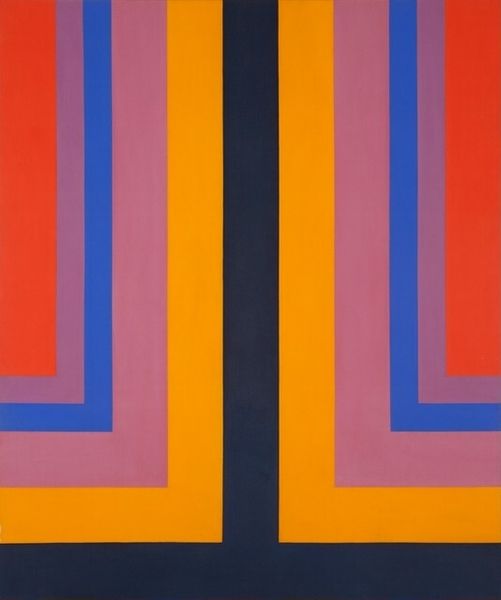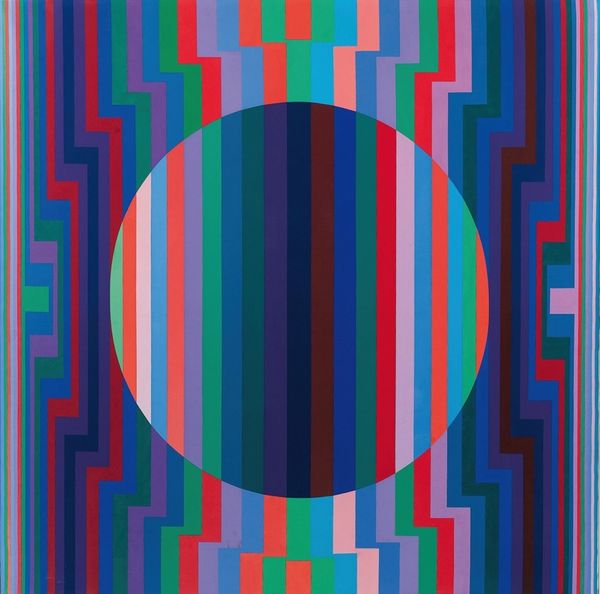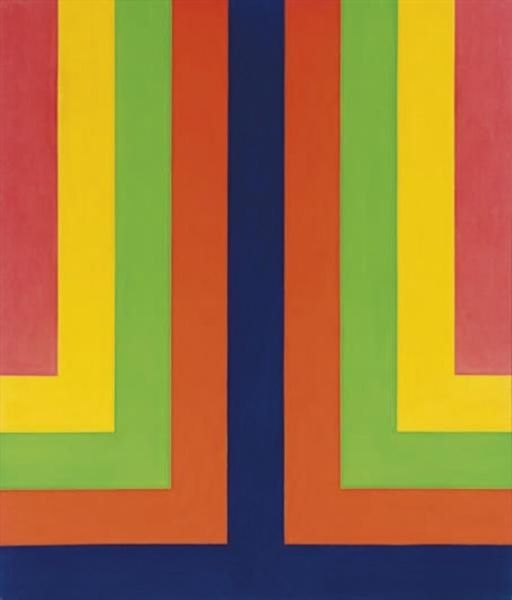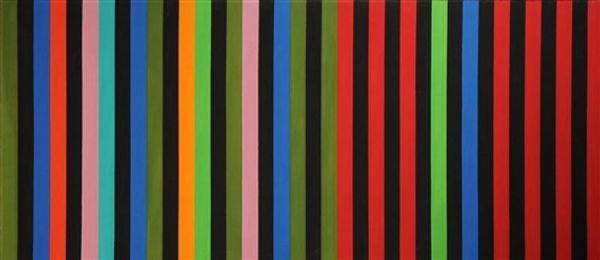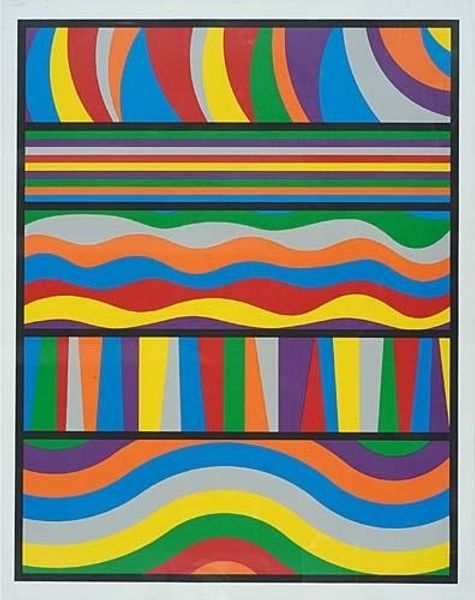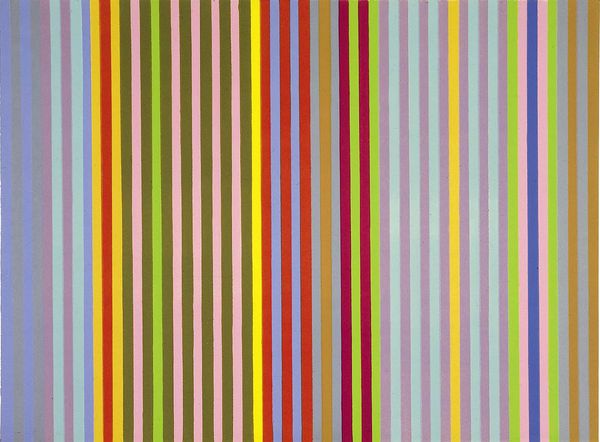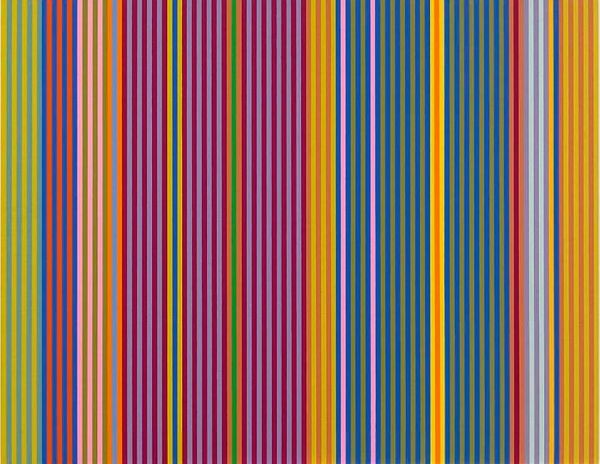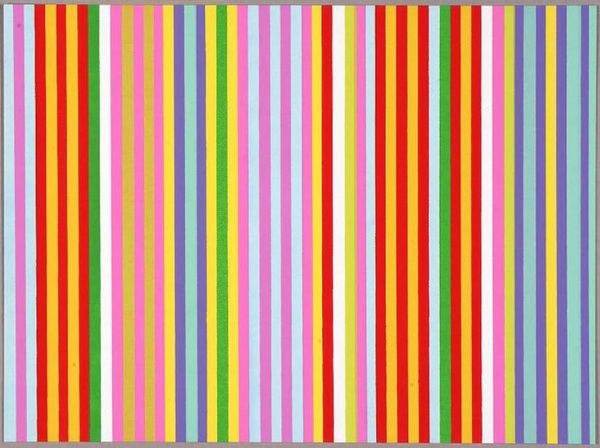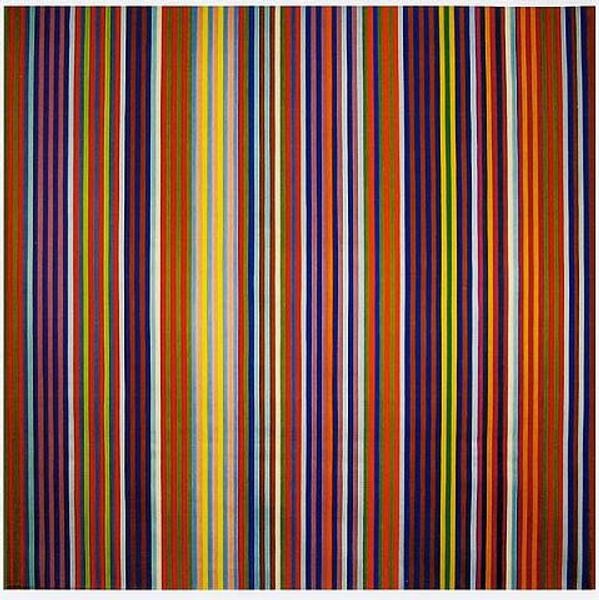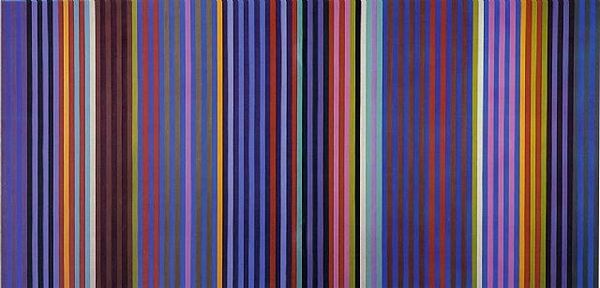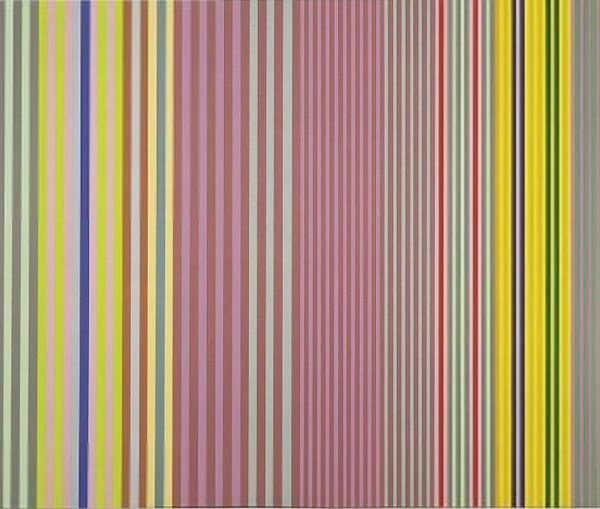
acrylic-paint
#
abstract-expressionism
#
natural stone pattern
#
circle
#
pattern
#
acrylic-paint
#
geometric pattern
#
abstract pattern
#
rectangle
#
minimal pattern
#
organic pattern
#
geometric
#
repetition of pattern
#
vertical pattern
#
line
#
pattern repetition
#
layered pattern
#
combined pattern
#
hard-edge-painting
Copyright: John Ferren,Fair Use
Editor: So, this is John Ferren's "Red Rose," created in 1966 using acrylic paint. It's very striking! The dominant red with the geometric shapes really grabs your attention. How would you interpret this piece? Curator: Well, from a historical perspective, it's important to understand that "Red Rose" emerges from the Hard-edge painting movement. We see the visual vocabulary, the precise geometric forms, the flat planes of color, and the rejection of gestural abstraction. How does the title, "Red Rose", connect or disconnect from the visuals for you? Editor: It's a bit confusing. The name evokes something natural and soft, but the painting is very structured and geometric. The organic feel from a rose isn't really there. Curator: Exactly! This dissonance might be intentional. Artists working in hard-edge often aimed to create purely optical experiences, divorced from narrative or symbolic content. Is Ferren perhaps commenting on the artificiality of imagery or challenging the viewer to reconsider the connection between name and representation? It prompts one to question the artwork's accessibility and, in a broader sense, the viewer's own place within an institution presenting fine art. Editor: That's interesting. So the hard-edge movement wasn't just about aesthetics, but also about questioning the role of art and how it's perceived? Curator: Precisely. These artists actively considered how their work would be viewed within a gallery setting, aware that such spaces influence perception. "Red Rose," therefore, becomes part of a larger conversation about the presentation and consumption of art. Editor: I never thought of it that way. Seeing how the art world and gallery context are tied to an artist's process definitely brings a new appreciation for abstract expressionism, hard-edge and geometric pieces in general! Curator: Indeed. Understanding the historical context adds a rich dimension to viewing the art. It opens pathways for richer understanding.
Comments
No comments
Be the first to comment and join the conversation on the ultimate creative platform.
